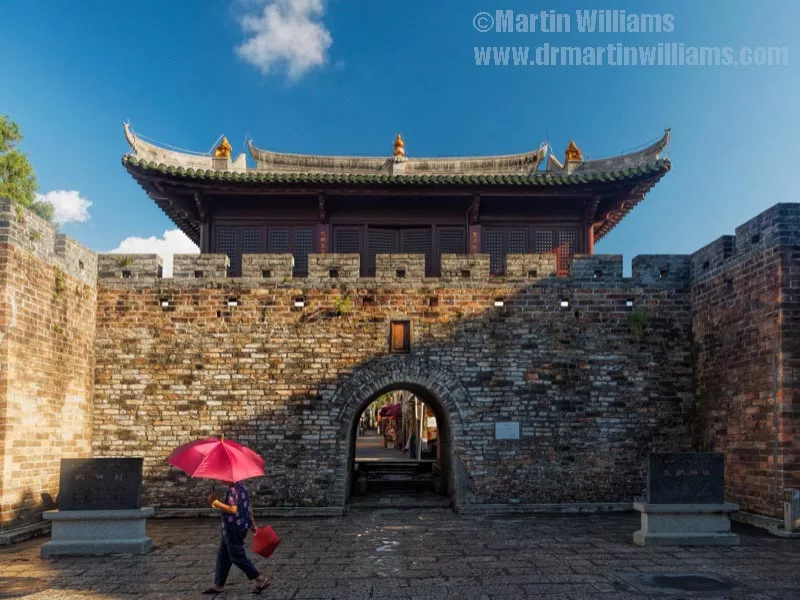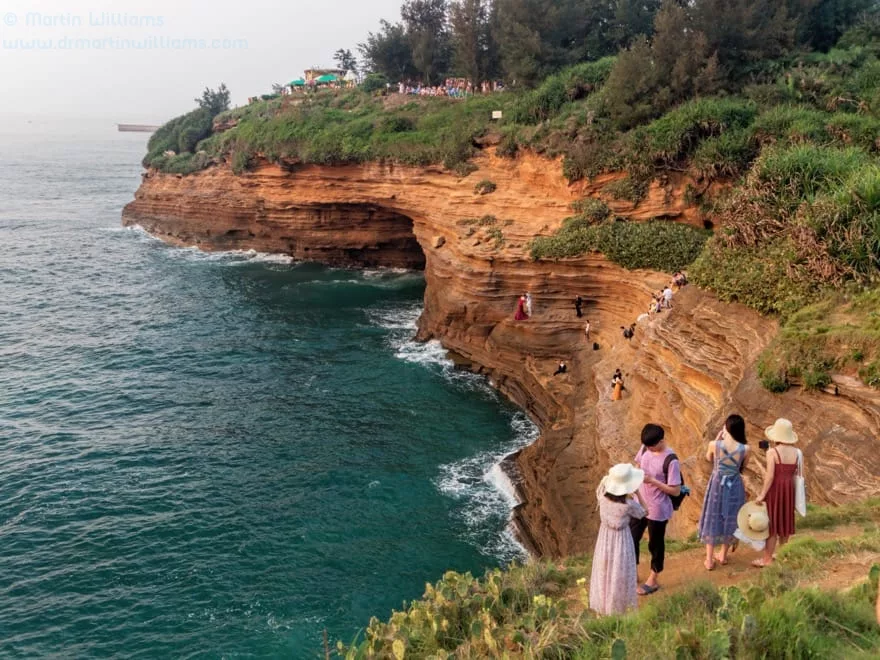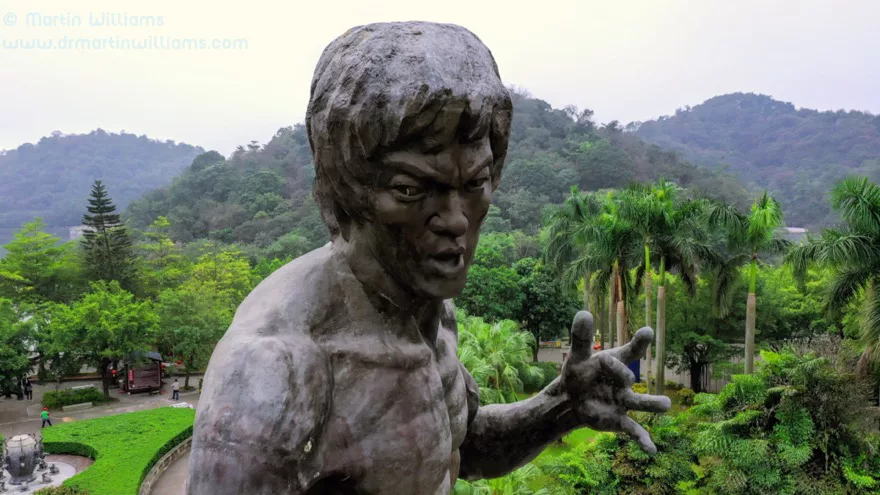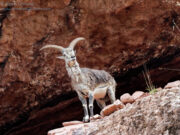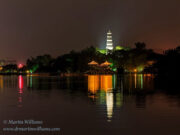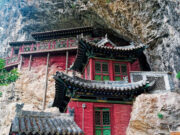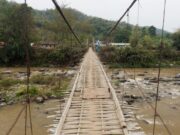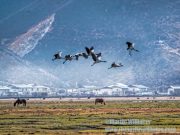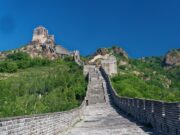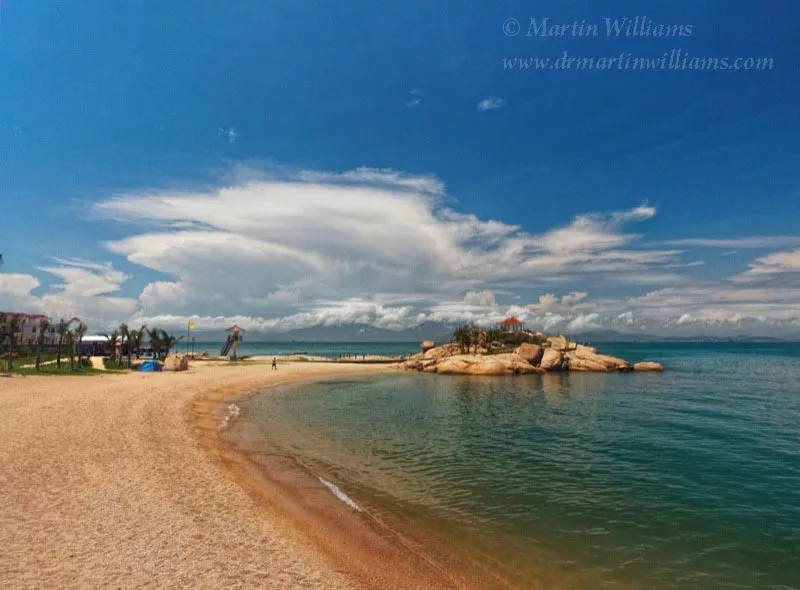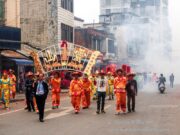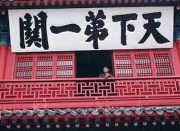Though China’s bullet train network is yet to reach Hong Kong [connected since I wrote this], lines start just across the border, in Shenzhen, and shorten travel times to places that are otherwise just a tad distant for a weekend trip. These include parts of the Nanling mountain range, such as Danxia Shan – a National Geopark where red sandstone forms outlandish peaks and rock structures.
While one of these structures is renowned for resembling a gigantic penis, Danxia Shan has far more to attract visitors, including hiking trails, wonderful views, lush forest, and an array of temples and hilltop pavilions.
A ride in bullet time

For a trip like this, taking a bullet train is part of the experience. China has transformed its rail network with construction of bullet train – high speed rail – lines, and even major stations like Shenzhen North are extraordinary, so grand and futuristic they wouldn’t look out of place in Star Wars.
The train eases out of the station. A readout in the compartment shows the speed – tens of kilometres per hour, then over 100, 200, and eventually a steady figure around 308km/hr. Outside, there’s a plain with villages, small fields, fish ponds. Then the buildings of Guangzhou, a slowdown, the train stops. Onwards again, and the plain gives way to hills.
Weird and wonderful hills
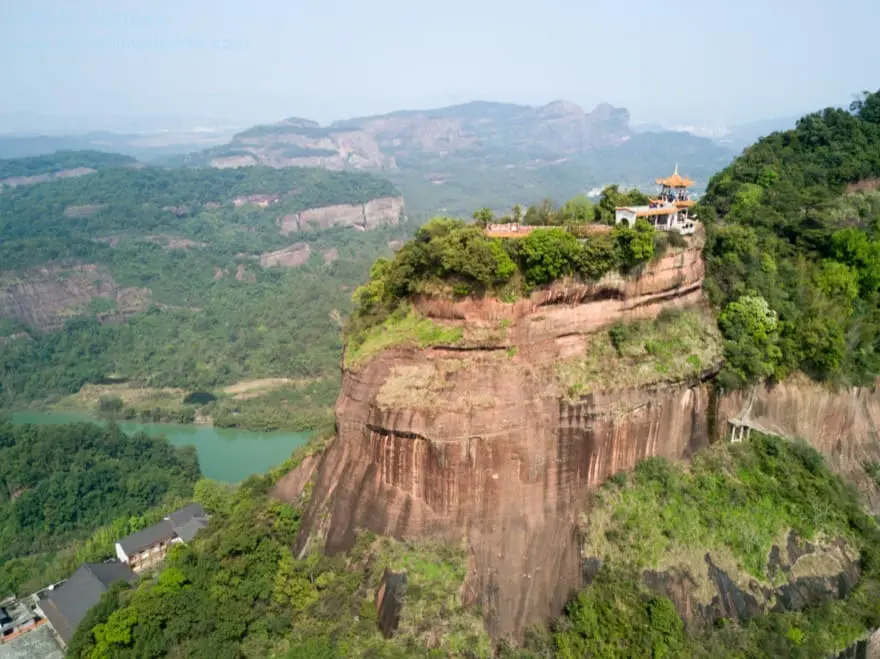
Danxia Shan is around 45km northeast of Shaoguan. There’s an entrance to the main park, beyond which lie clusters of small restaurants, and rows of newly built hotels set in an open area surrounded by hills.
Though the hills are not especially high – the tallest peak is just 619m – they make for remarkable scenery. Instead of sloping flanks like regular hills, their sides are steep or even sheer cliff faces, their tops often appearing almost flat. Some are massive, squat hills, others just columns rising above forested lowlands.
An artificial lake winds, ribbon like, through the park, and boat rides are said to be pleasant. But it’s surely more rewarding to hike one or more of the trails.
Big willy – Yangyuanshi the Marvellous
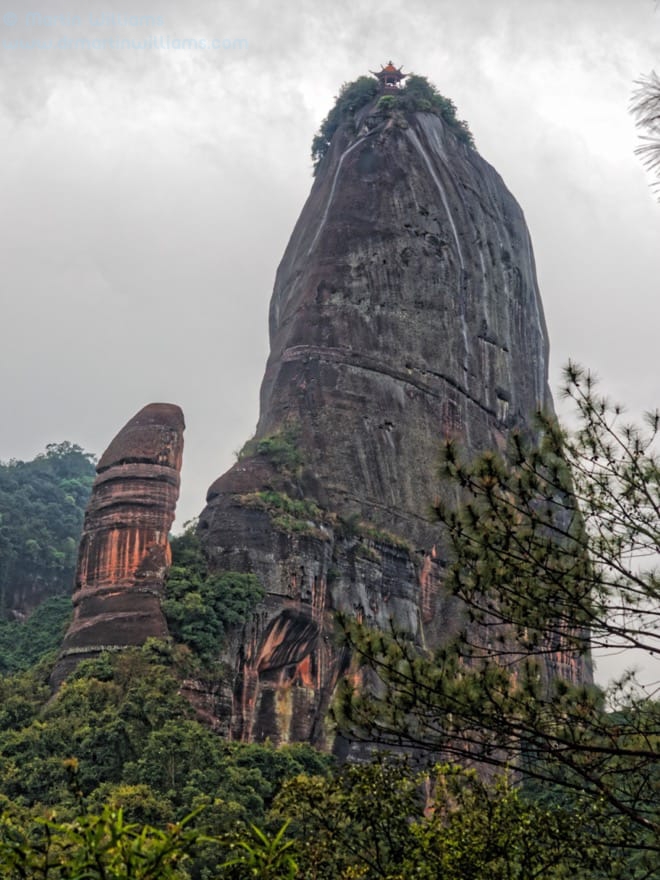
For most people who come, there is one “must visit” attraction – the huge rock penis. It’s up past a gate to the park interior. A sign calls the rock Yangyuanshi, referring to it as the “Marvelous rock in the world”.
Now, many a rock “turtle” or “monk” might little resemble an actual turtle or monk. But as you arrive at a viewing area below the Marvellous rock, and look up to see it standing tall and proud – fully 28m high, you realise this could be Austin Powers’ favourite rock formation, as it indeed looks remarkably like a penis.
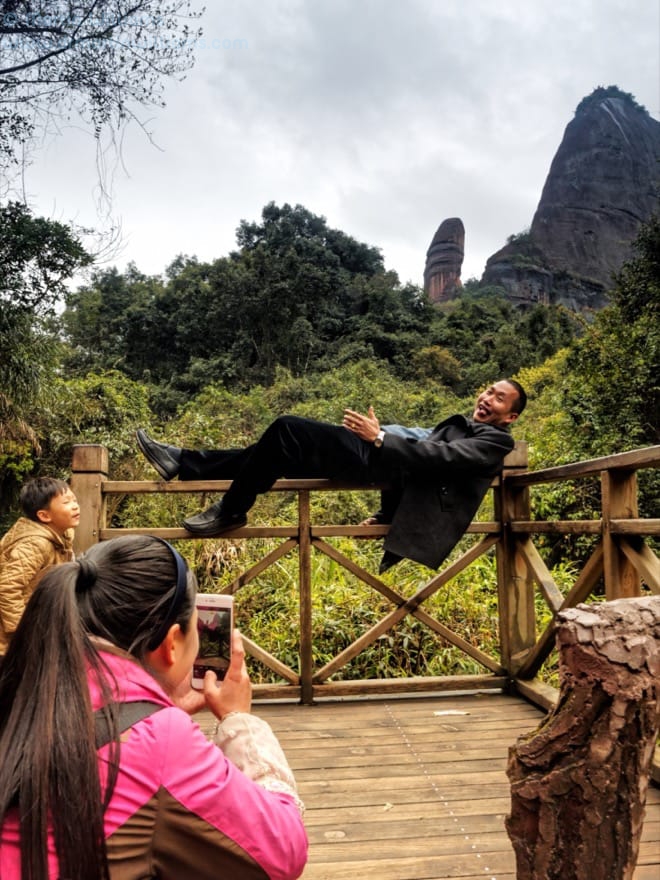
Visitors arrive and take photos, some giggling and posing before the mighty column. A man is carefully positioned by a tour guide so she can portray him complete with enhanced manhood. Walk up stairs past the best viewing platform, and you can even pay old ladies for incense sticks to light at an altar to Yangyuanshi the Marvellous.
And if that’s not enough body-part-like rocks for you, there’s a trail from here to Breast Rock – a pitiful disappointment; and elsewhere is a narrow cleft akin to a vagina.
Never mind such silly or even embarrassing sightseeing! On to another trail, beyond the viewing area. A sign indicates this is to a pavilion 800m away, as if it could make for a pleasant walk. But it turns out this is the pavilion just visible way above Yangyuanshi – perched atop a hill that’s like an immense rock anvil with the pointed end thrust skywards.
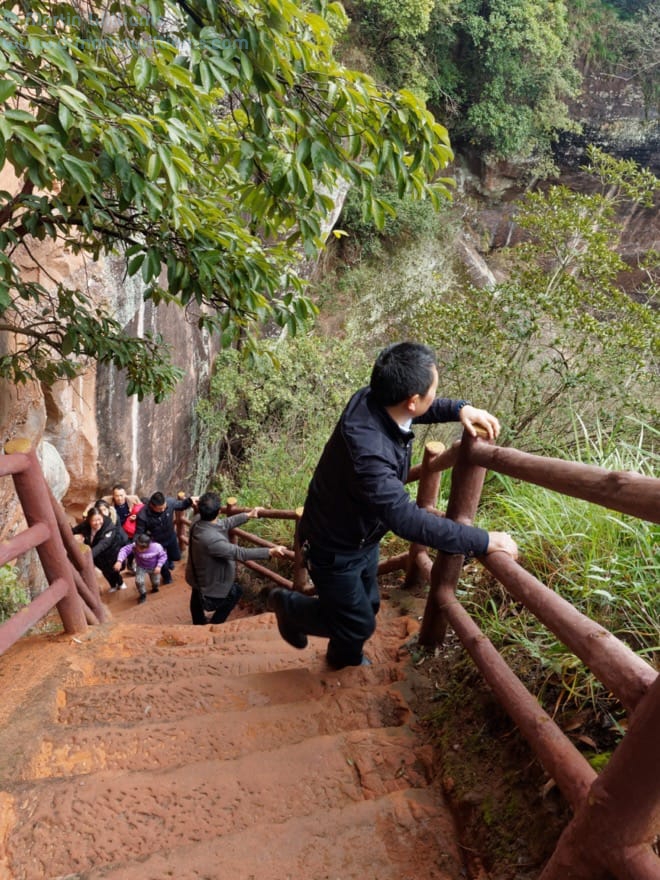
There are steps up the hill. Not ordinary steps, but mostly steps carved into the rock. Though there’s also a handrail, the steps are challenging, especially where they are up almost vertical slopes, and barely as wide as a hand. Even from part way up, the view is impressive; it could be stunning from the top.
Elder Peak
The easiest way to a Danxia hilltop is via a cable car, up Elder Peak (or Old Person Mountain). From the upper station, there’s a trail to a platform above a cliff, affording views across a landscape recalling scenes in the movie Avatar, or the Venezualan region that inspired The Lost World and Up.
There are also trails through hilltop forest, where you can find remnants of a time when Danxia Shan was a thriving centre of Buddhism and Taoism. These include an abbot’s tomb, and the Snow Grotto Temple, which was carved into a small cliff. Other temples can be glimpsed nearby or are pictured on information boards. Some are in precarious positions on cliffs and beneath overhangs, much as Lara Croft explores in Tomb Raider.
Boards note that temples were abandoned at the end of the Republic of China; I guess this coyly omits mention of the Cultural Revolution, when fanatical Red Guards maybe arrived to wreak havoc in destroying the “Four Olds”. Nowadays, a few are operating again.
At the northern tip of Elder Peak is a pavilion that’s another popular vantage. From here, two trails lead steeply down the precipitous sides. While it might be great to explore further, getting this far just might be enough for a weekend break – so it’s time to head back to Shaoguan, Shenzhen, and Hong Kong.
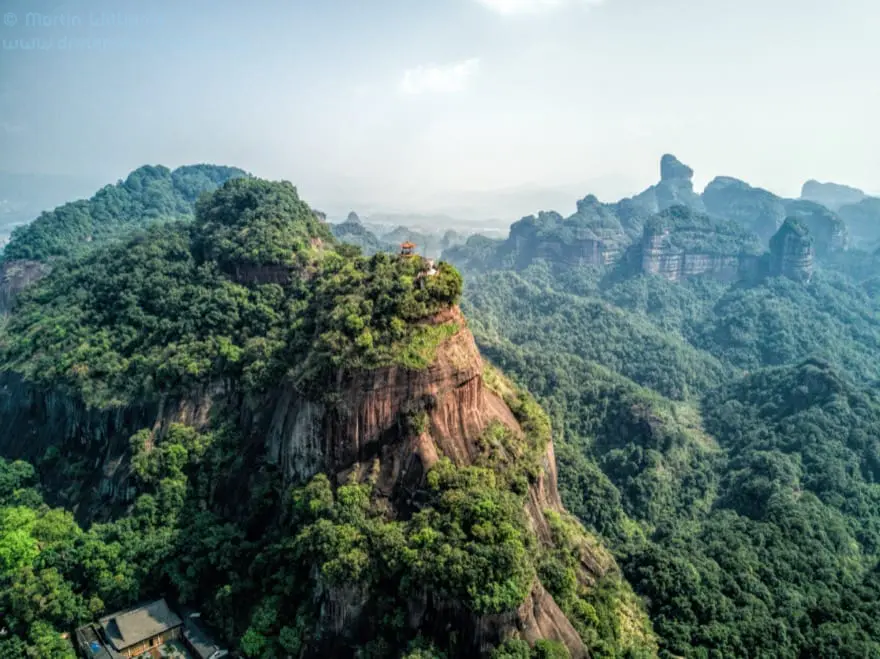
Getting there
Bullet trains can be booked online, and tickets collected at stations in Shaoguan. Trains run from Shenzhen North, and from Futian station which is closer to Hong Kong, just across the border from Lok Ma Chau; journey time around 1.5hrs, compared to over 4hrs with a regular train.
There are buses to Danxia Shan from beside Shaoguan bullet train station, taking around 1.5hrs; but a somewhat faster option is to hire a car with driver from there (drivers may be touting for business as the train arrives).
While there is accommodation in Ruyuan just outside the geopark, it’s perhaps better to stay at one of the hotels inside the main gate.
Two day tickets for entry to the inner park cost 150 yuan for adults, half price for children; evidently include rides on a park bus.

























